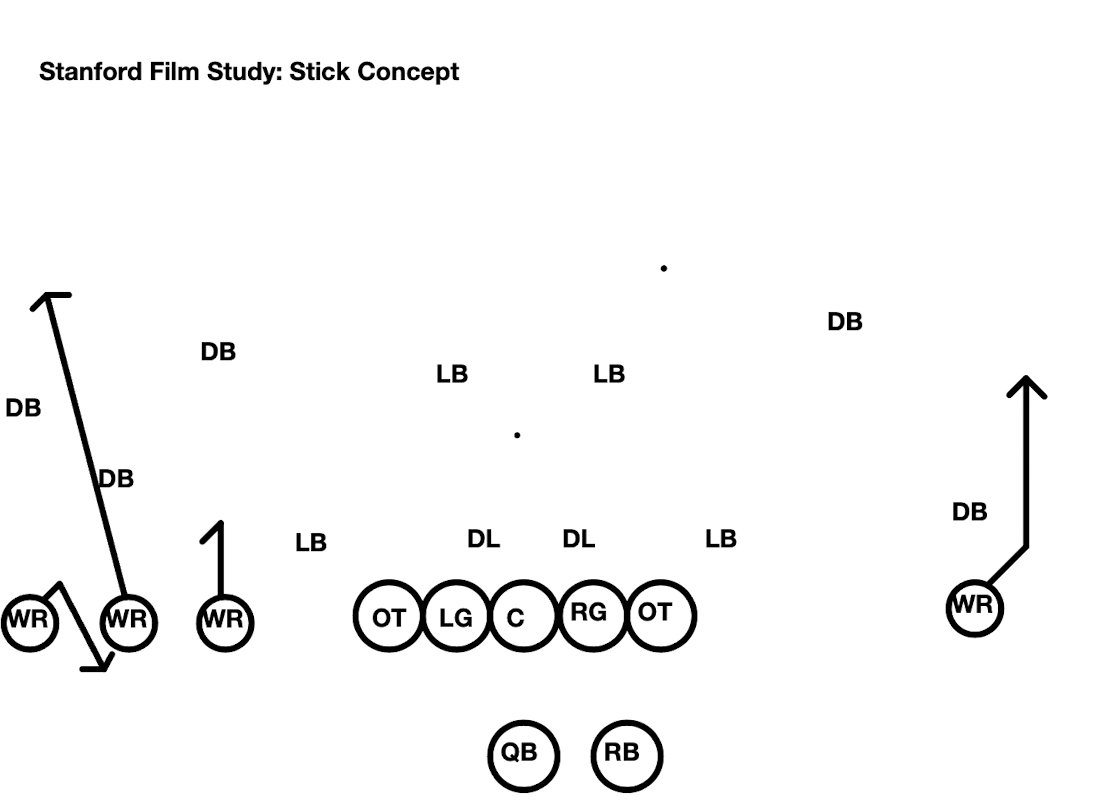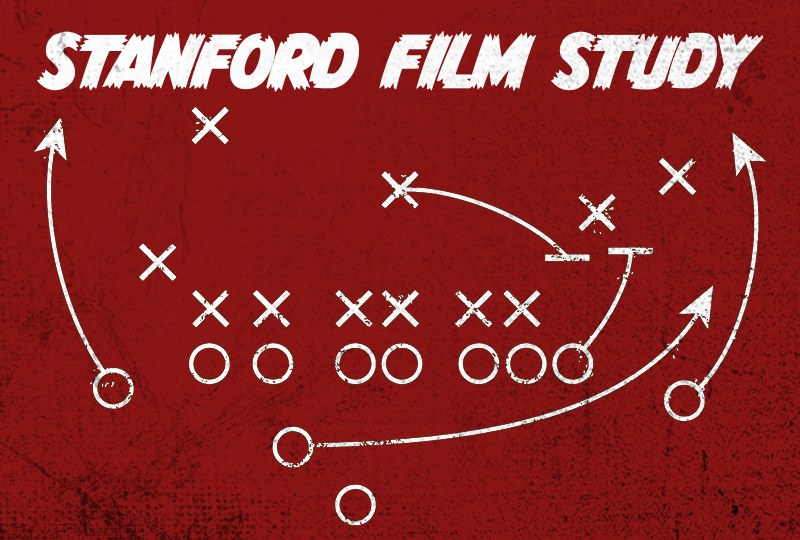The stick concept is one of the most basic route concepts in the West Coast offense. Designed to beat both man and zone coverages, stick forces horizontal and vertical stretches in the defense that allow for easy underneath throws. Almost every offense runs stick in some form, and Stanford is no exception. This installment of the film study will show how the Cardinal have installed the concept in their playbook
How does the stick concept work?
The stick concept involves a flat route, a stick route and a deep route. A stick route is a five-yard hitch route that can turn into an out route depending on whether the defense plays man or zone coverage. Usually, the Y-receiver or tight end will run the stick route, but the flat and deep routes can be run in any combination by the rest of the receivers. The deep route tries to remove defenders vertically, while the flat route attempts to widen the defense.
If there’s zone coverage, the Y-receiver will run the hitch-version of a stick route and find a soft spot in the zone. On the other hand, he’ll run an out-route working away from the defender if they’re in man coverage.
In previous iterations of stick, the outermost receiver usually runs a go route, while the receiver inside of him will run some type of route to the flat. This allows the quarterback to cleanly read the flat defender to see where he goes. If he covers the flat, the quarterback will throw it to the stick. Instead, if he decides to go with the stick route, the quarterback should hit the flat.
Stanford runs a different iteration of stick that was popularized by current Panthers offensive coordinator Joe Brady during his time at LSU. Stanford’s stick concept utilizes the slot fade for the deep route, a screen route in the flat and the stick route by the tight end.
The slot fade allows more room for the quarterback to throw the deep ball, especially if he feels the one-on-one matchup to be advantageous. It also allows more room for the stick route to work outside if there’s man-to-man coverage.
Below is a play diagram of Stanford running the stick concept against Washington this season.

Junior tight end Benjamin Yurosek runs the stick, senior receiver Elijah Higgins runs a slot fade to the strong side, while freshman receiver Mudia Reuben runs a screen. The slot fade forces the nickel to go vertical, while the screen forces the outside cornerback to stay wide. The Huskies were playing zone-match coverage, which means the zone turns into man-to-man if the receiver reaches a certain depth. With this in mind, the Washington safety looks to be playing off on Yurosek.
Yurosek sprints five yards upfield, just beneath the safety to avoid getting locked on, and then turns back to junior quarterback Tanner McKee. McKee is able to hit Yurosek, who is then able to pick up yards after the catch to give the Cardinal a first down.
Look for Stanford to run more stick plays to get the ball to Yurosek for the rest of the season.
